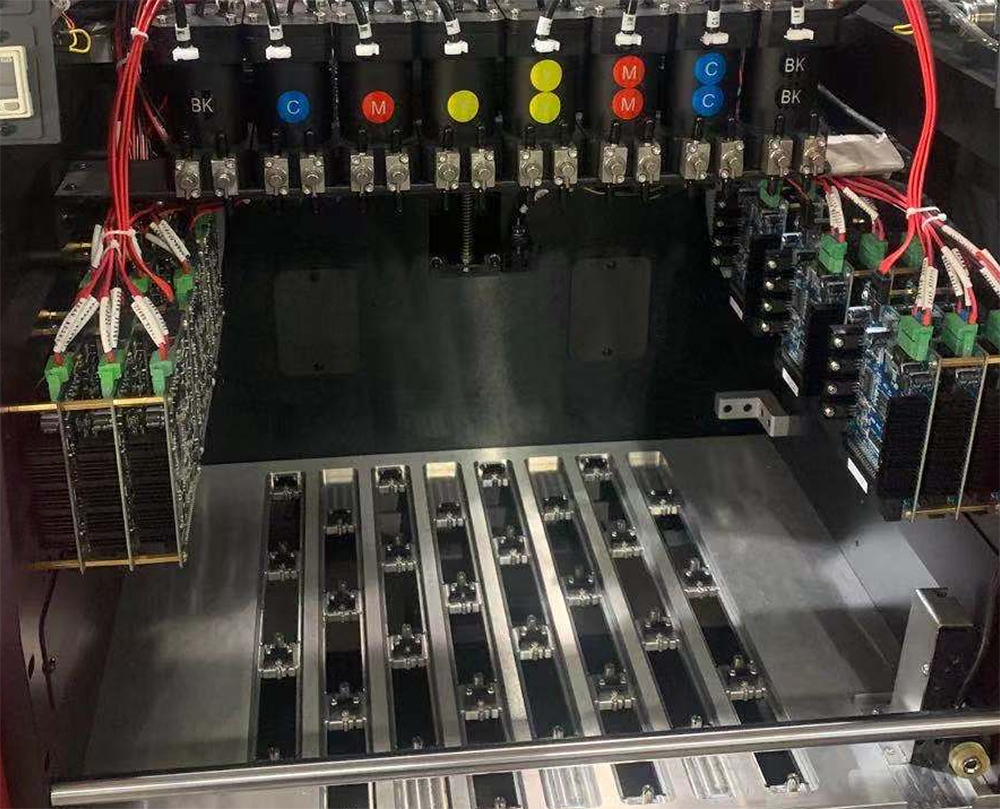UV Flatbed Printer: The Advantages of a Heated Vacuum Table
UV Flatbed Printer: The Advantages of a Heated Vacuum Table
In the realm of digital printing, UV flatbed printers have emerged as a versatile and efficient solution for a wide array of applications. These printers are particularly adept at handling various materials and substrates, offering high-quality prints with precision and detail. Among the many features that enhance the performance of UV flatbed printers, the heated vacuum table stands out as a significant advantage. This article delves into the benefits of incorporating a heated vacuum table in UV flatbed printers, exploring how it contributes to improved print quality, enhanced material compatibility, and increased productivity.

1. Introduction to UV Flatbed Printers
UV flatbed printers utilize ultraviolet (UV) curing technology to instantly dry ink as it is applied to the substrate. This process allows for the printing of high-resolution images directly onto a range of materials, including plastics, glass, wood, metal, and more. The UV curing process ensures durability, fade resistance, and scratch resistance, making UV flatbed printers ideal for both indoor and outdoor applications.
2. The Role of a Heated Vacuum Table
A heated vacuum table is a critical component of a UV flatbed printer, designed to optimize the printing process by providing a stable and controlled printing environment. This table consists of a flat surface that can be heated and equipped with a vacuum system to secure the substrate firmly in place during printing. The combination of heat and vacuum offers several advantages that significantly enhance the overall printing experience.
3. Enhanced Print Quality
One of the primary advantages of a heated vacuum table in UV flatbed printers is the improvement in print quality. The heat function of the table helps to regulate the temperature of the substrate, ensuring that it remains consistent throughout the printing process. This temperature control is particularly crucial when printing on materials that are sensitive to temperature changes, such as certain types of plastics or composites.
By maintaining a stable temperature, the heated vacuum table minimizes the risk of ink bleeding, smearing, or uneven curing. It also promotes better ink adhesion, as the heat can slightly soften the surface of the substrate, allowing the ink to penetrate more effectively. This results in sharper, more vibrant prints with smoother transitions between colors and gradients.
4. Increased Material Compatibility
The ability to print on a wide range of materials is a hallmark of UV flatbed printers. The heated vacuum table further extends this capability by providing a versatile platform that can accommodate substrates of various sizes, shapes, and thicknesses. The vacuum system ensures that even lightweight or flexible materials remain securely in place, preventing any movement or distortion during the printing process.
For materials that are prone to warping or curling, such as thin sheets of plastic or certain types of wood, the heat function of the table can help relax the material, reducing the likelihood of deformation. This not only improves print quality but also expands the range of materials that can be successfully printed on, making UV flatbed printers with heated vacuum tables a versatile choice for a diverse set of applications.
5. Improved Production Efficiency
Production efficiency is a crucial aspect of any printing operation, and the heated vacuum table contributes significantly to this end. By providing a stable and controlled printing environment, it minimizes the need for manual adjustments or interventions during the printing process. This leads to faster print cycles and reduced downtime, as the printer can consistently produce high-quality prints without interruption.
The heat function of the table also accelerates the curing process, allowing for quicker ink drying times. This means that prints can be handled and processed immediately after printing, without the need for additional drying or curing steps. This not only saves time but also reduces the risk of ink smearing or damage during post-processing.
6. Enhanced Durability and Longevity of Prints
The combination of UV curing technology and the controlled environment provided by the heated vacuum table results in prints that are not only visually appealing but also highly durable. The even curing of the ink, facilitated by the stable temperature of the table, ensures that the prints are resistant to fading, scratching, and other forms of wear and tear.
This durability is particularly important for outdoor applications, where prints may be exposed to harsh weather conditions or frequent use. UV flatbed printers with heated vacuum tables are thus an ideal choice for creating signs, banners, vehicle graphics, and other outdoor advertising materials that require long-term durability.
7. Conclusion
In conclusion, the heated vacuum table is a vital component of UV flatbed printers, offering a range of advantages that significantly enhance print quality, material compatibility, and production efficiency. By providing a stable and controlled printing environment, it enables the production of high-quality prints on a wide range of materials, making UV flatbed printers a versatile and reliable choice for a diverse set of applications.
As technology continues to advance, it is likely that heated vacuum tables will become even more sophisticated, offering further improvements in print quality, material compatibility, and production efficiency. For businesses and individuals seeking a reliable and versatile digital printing solution, UV flatbed printers equipped with heated vacuum tables are an excellent choice, offering a combination of performance, durability, and versatility that is hard to match.
